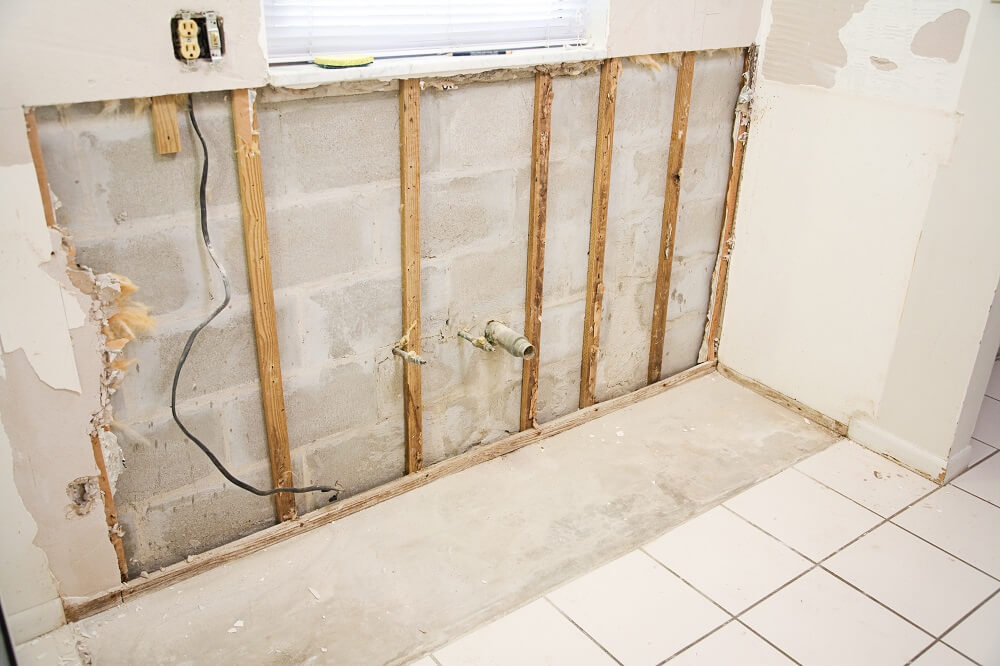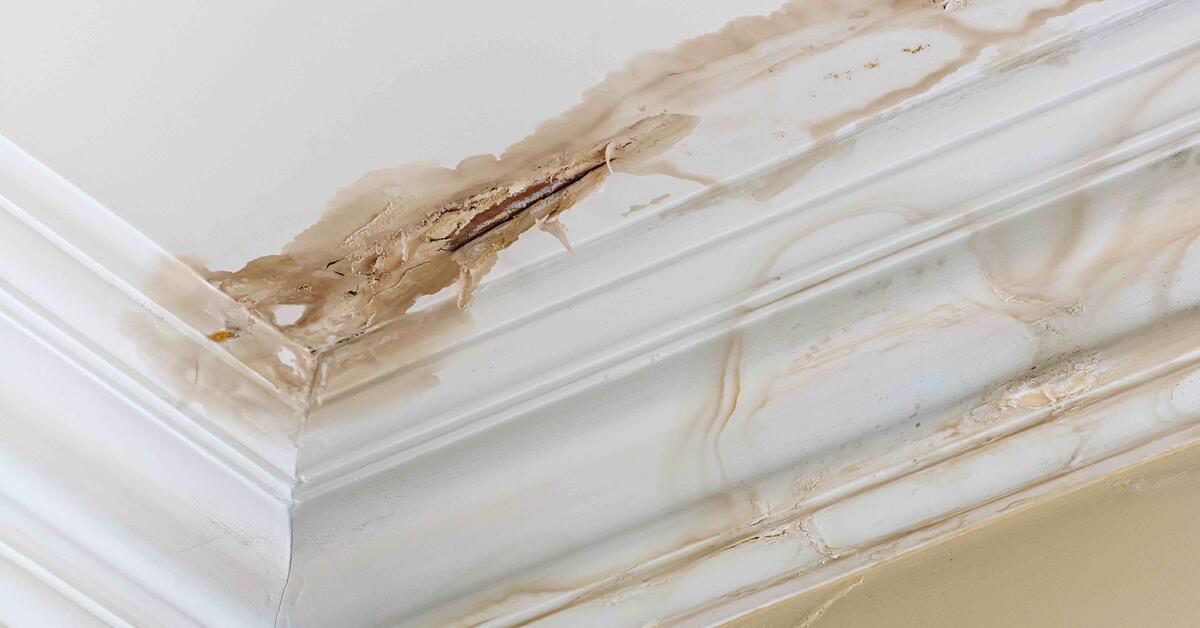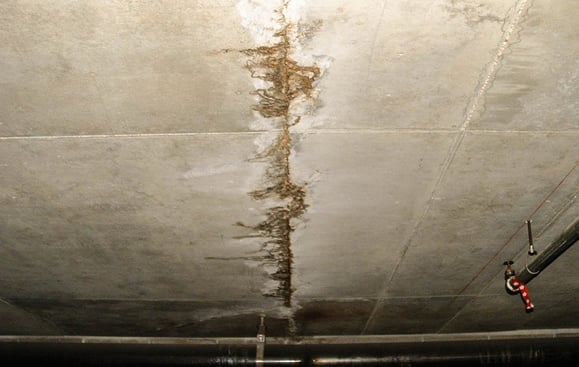Full-Spectrum Water Damage Repair Services for Complete Property Restoration
Full-Spectrum Water Damage Repair Services for Complete Property Restoration
Blog Article
The Process of Water Damage Clean-up: Guaranteeing Your Home Is Brought Back Successfully
Water damage can be a daunting obstacle for home owners, demanding a meticulous and organized cleanup process to bring back security and performance. A comprehensive analysis is vital to recognize the degree of the damage and figure out the ideal removal steps. Following this, reliable water extraction techniques play a pivotal duty in alleviating further damage. Nevertheless, the subtleties of drying out, sanitizing, and eventual repair are similarly important and usually neglected. Understanding these phases can make a significant distinction in the result of your home's reconstruction, motivating a closer check out what each action entails.
Evaluating the Damages
Upon discovering water damage, the initial step is to extensively analyze the degree of the effect. This preliminary assessment is crucial, as it aids identify the required steps for efficient cleaning and repair. Begin by examining the impacted areas, including wall surfaces, ceilings, floorings, and individual valuables, to recognize the source of the water breach, whether from flooding, leaks, or condensation.
Recording the damage is necessary for both insurance coverage claims and planning remediation efforts - damage restoration services. Use pictures and written notes to capture the intensity of the damages, keeping in mind any affected architectural aspects and materials. Pay special interest to locations that may not be promptly visible, such as behind walls and under rugs, as concealed moisture can cause further problems, including mold growth
Furthermore, evaluate the timeline of the water direct exposure. The longer the materials stay wet, the better the possibility for damages. Understanding the duration of direct exposure will notify the necessity of remediation initiatives. Ultimately, a comprehensive assessment prepares for an effective water damage cleanup procedure, ensuring that all affected locations are resolved efficiently and thoroughly.
Water Removal Methods

Specialists normally employ completely submersible pumps for larger volumes of water, which can quickly relieve flooding in cellars or other impacted locations. For smaller sized amounts, wet/dry vacuum cleaners are frequently used to draw out recurring moisture from rugs and difficult surface areas. Additionally, utilizing mobile extractors permits for targeted elimination in confined spaces or areas with fragile materials.
In instances of contaminated water, such as sewage or floodwater, progressed removal techniques might involve making use of biohazard devices to ensure safety and compliance with health regulations. High-powered extraction devices are essential in reducing water retention in structural materials, which can cause mold growth and architectural degeneration if not dealt with without delay.
Ultimately, the effectiveness of water removal techniques plays a critical role in the total success of the water damage cleaning procedure, preparing for subsequent remediation initiatives.
Drying and Dehumidification
When standing water has been effectively drawn out, the next crucial phase in the water damage cleanup procedure is drying and dehumidification. This action is vital to prevent more damage and mold growth, which can happen within 24 to 2 days in moist atmospheres.
To attain effective drying out, customized equipment such as industrial-grade air moving companies and dehumidifiers is used. Air movers circulate air across damp surfaces, improving dissipation prices, while dehumidifiers lower humidity degrees in the air, promoting a conducive atmosphere for drying. The mix of these tools ensures that wetness is extracted from wall surfaces, floors, and home furnishings, permitting them to completely dry thoroughly.
It is important to monitor the drying out procedure carefully. Specialists commonly make use of dampness meters to analyze the moisture material in different materials, ensuring that all influenced areas reach appropriate dry skin levels. This meticulous strategy assists to stop covert moisture pockets that could cause structural damage or unhealthy mold development.

Cleansing and Sanitizing
After the drying and dehumidification stage is full, the next vital step in water damages cleanup is cleaning up and sterilizing the impacted areas. This process is essential to stop the development of mold, microorganisms, and other pathogens that grow in damp atmospheres.
The cleansing phase typically entails removing any debris, dirt, and pollutants from surface areas utilizing specialized cleaning agents. For tough surface areas, a mix of soap and water or commercial cleaning items is commonly used. Soft products, such as upholstery and rugs, may require a lot more comprehensive cleaning approaches, consisting of heavy steam cleaning or deep removal methods, to guarantee complete hygiene.

Disinfecting adheres to cleaning, making use of EPA-approved anti-bacterials to eliminate hazardous microbes. This action is important, particularly in locations that may have entered call with floodwaters or sewer, as these sources can posture serious health threats.
Additionally, it is essential to address any type of staying odors, which may need making use of smell neutralizers or sophisticated strategies like ozone treatment. Proper cleaning and sanitizing not only restore the safety and security and hygiene of your home however additionally lay the foundation for effective remediation and repair work in succeeding Check Out Your URL phases of the water damage cleaning process.
Remediation and Repair Services

When the evaluation is complete, repair initiatives can begin. Furthermore, floor covering may require similar interest, depending on the degree of water exposure.
It is critical to engage experienced remediation professionals during this procedure, as they possess the knowledge to manage complicated repair services successfully. Additionally, they can assist reduce potential future problems, such as mold development or structural instability, thus making sure a habitable and secure living setting. Ultimately, effective reconstruction and repair work bring back the home's integrity and boost its overall worth.
Verdict
To conclude, the process of water damage clean-up is crucial for recovering a home to its pre-damage condition. Each phase, from analyzing the damage to applying effective water removal techniques, complied with by extensive drying, sanitizing, and needed repairs, plays a crucial role in making certain safety and conformity with structure requirements. Effective implementation of these actions not just minimizes instant damages yet also improves the long-lasting stability and you could look here worth of the property.
Water damages can be a complicated challenge for property owners, demanding a structured and meticulous cleaning procedure to recover safety and performance. Eventually, a comprehensive evaluation lays the foundation for an effective water damage clean-up process, making sure that all affected locations are resolved properly and extensively.
Reliable water removal methods are vital in minimizing damages and avoiding more issues following a water invasion event.In verdict, the procedure of water damage clean-up is important for bring back a home to its pre-damage condition. Each phase, from home examining the damage to executing efficient water removal strategies, complied with by extensive drying, disinfecting, and needed fixings, plays a crucial function in making certain safety and security and conformity with building criteria.
Report this page